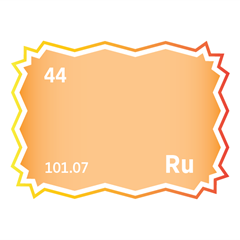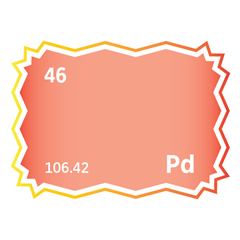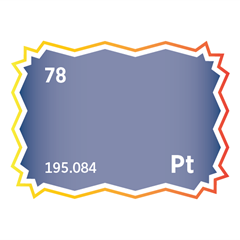Québec
Critical minerals, policy, and the energy transition
The Energy Transition in Québec, Canada
An ambitious energy transition is unfolding in Quebec's vast and diverse landscape, a province known for its vibrant culture and breathtaking natural beauty. Québec stands out for strategically utilising its abundant hydroelectric resources, positioning itself as a leader in renewable energy within Canada and beyond. The province's journey toward a sustainable future is characterised by its extensive hydroelectric power plants, which harness the mighty rivers that traverse its terrain, providing clean, renewable energy to its residents and neighbouring regions. Beyond hydroelectricity, Québec is diversifying its renewable energy portfolio with wind, solar, and biomass investments. The province's commitment to sustainability is further evidenced by initiatives to improve energy efficiency across all sectors, electrifying transportation, reducing greenhouse gas emissions, and enhancing air quality. The Québec government's proactive policies and incentives support the development of green technologies, attracting innovative companies and fostering research and development in renewable energy. This strategic approach advances Quebec's environmental goals, stimulates economic growth and job creation in the green sector, and exemplifies how leveraging natural resources and embracing innovation can lead to a resilient, low-carbon future.
Québec's energy revolution
Québec’s critical mineral wealth and hydropower resources position it uniquely to advance North America’s energy transition. The province has emerged as a pivotal player in the global shift towards renewable energy and decarbonisation, leveraging its vast geological endowment of critical minerals and progressive policy frameworks. The province’s subsoil contains 28 designated critical and strategic minerals (CSMs), including lithium, graphite, rare earth elements (REEs), and high-purity iron, which are indispensable for electric vehicle (EV) batteries, wind turbines, and green steel production. Supported by a CA$90 million investment under the Québec Plan for the Development of Critical and Strategic Minerals (2020–2025) and recent amendments to the Mining Act, the province aims to position itself as a North American leader in sustainable mineral development. Concurrently, Hydro-Québec’s Action Plan 2035 outlines a CA$110 billion strategy to expand renewable energy generation and grid infrastructure, targeting 60 TWh of additional clean electricity by 2035.
Québec’s geological diversity spans the mineral-rich Grenville Province in the north to the lithium-bearing clays of the James Bay region. The province’s 2024 updated CSM list reflects both global demand shifts and local industrial priorities, categorising minerals as either "critical" (e.g., copper, gallium) or "strategic" (e.g., lithium, REEs) based on their role in decarbonisation and economic security.
Lithium deposits in the James Bay region, notably the Whabouchi project, represent one of the world’s largest hard-rock lithium resources, with reserves exceeding 36 million tonnes of lithium oxide. Combined with sedimentary graphite from the Lac Guéret deposit, a key anode material for lithium-ion batteries, Québec could supply 20% of North America’s battery-grade graphite by 2030. However, the absence of local lithium hydroxide conversion facilities currently necessitates exporting spodumene concentrate to overseas refiners, a gap the province aims to address through partnerships with companies like Nemaska Lithium.
Heavy REEs, including dysprosium and terbium, are concentrated in the Strange Lake complex near the Labrador border. These minerals are vital for permanent magnets in wind turbines and EVs, yet Québec’s REE sector remains underdeveloped compared to Chinese dominance. Conversely, high-purity iron ore (≥67% Fe) from the Labrador Trough supports green steel production through direct reduction processes, reducing reliance on coal-based blast furnaces. The recent inclusion of high-purity iron and silica on Québec’s CSM list underscores their role in decarbonising heavy industries.
As the world’s fourth-largest aluminium producer, Québec accounts for 90% of Canada’s output, with smelters powered by Hydro-Québec’s hydropower. The metal’s lightweight properties make it essential for EV frames and grid infrastructure, while nickel from the Raglan Mine supports stainless steel and battery cathode production.
Québec’s mining regime has undergone significant reforms to align mineral development with environmental and social priorities. The 2024 amendments to the Mining Act and the Impact Assessment Act introduce stricter exploration controls, Indigenous consultation mandates, and circular economy incentives.
Under the 2024, Mining Reforms Act, key changes include replacing "mining claims" with "exclusive exploration rights," requiring operators to complete 90% of planned work before renewing or transferring permits. This aims to curb speculative land acquisitions and ensure serious investment. Additionally, all new mining projects now undergo review by the Bureau d’Audiences Publiques en Environnement (BAPE), Québec’s environmental assessment board, with provisions for Indigenous co-management of reserved lands.
Structured around four pillars, geological research, sectoral integration, circular economy promotion, and public engagement, the 2020–2025 CSM plan prioritises geological mapping, recycling infrastructure, and equitable community partnerships. Earth MRI-funded surveys have already identified over 200 high-potential zones for copper and REEs, helping to reduce exploration risks. To support the circular economy, pilot projects aimed at recovering lithium and cobalt from spent EV batteries have been launched, backed by CA$15 million in provincial grants. Furthermore, revenue-sharing models with Indigenous nations, such as the Cree Nation Government, are being developed to ensure that projects on traditional territories deliver tangible local benefits.
Hydro-Québec, the provincial utility, is the linchpin of Québec’s energy transition. It leverages its 94% hydropower-dominated grid to attract green industries and phase out fossil fuels.
The Action Plan 2035 targets 10,000 MW of new wind capacity and 5,000 km of transmission lines by 2035, alongside CAD 45–50 billion in grid modernisation investments. These efforts aim to meet a projected 150–200 TWh surge in demand from EV adoption, data centres, and green hydrogen production. Notably, the Apuiat wind farm, developed with the Innu communities, shows off Québec’s model of Indigenous-inclusive renewable projects.


Source: SFA (Oxford)
Quebec's Critical and Strategic Minerals
In 2020, a range of minerals were designated as critical and strategic in Quebec, reflecting their importance to economic development and supply chain security. These minerals include antimony, bismuth, cadmium, cesium, cobalt, copper, gallium, natural graphite, indium, lithium, magnesium, nickel, niobium, platinum group elements, rare earth elements, scandium, tantalum, tellurium, tin, titanium, vanadium, and zinc. These minerals play a vital role in various industries, including technology, energy, and manufacturing, emphasizing the need for secure and sustainable supply chains.
In January 2024, six new minerals were officially designated as critical and strategic in Quebec: aluminium, apatite, germanium, high-purity iron, high-purity silica, and manganese. For high-purity iron to qualify under this classification, it must contain an iron concentrate content of at least 67% and exhibit low levels of impurities. Similarly, high-purity silica, which includes both metal silica and chemical silica, must achieve a minimum purity level of 99% (2N) and also be low in impurities to meet the critical and strategic mineral criteria.
Join us at SFA (Oxford)'s Critical Minerals events
Join us in person or online from Québec for SFA (Oxford)’s latest Critical Minerals events, focused on the key materials driving the energy transition and low-carbon technologies. Connect with global leaders, government, investors, miners, end users, and key players across the supply chain and recycling sector, and stay ahead of the trends shaping the battery metals and PGM markets. Register today to secure your place.




Strategic Minerals identified by the Government of Québec linked to public policy and renewable energy
Energy Raw Materials and products produced in Québec
Essential minerals production and products in Québec
The journey of Canada's critical minerals
Canada's renewable energy progress hinges on crucial minerals like lithium, nickel and cobalt, PGMs, rare earths, and minor metals, essential for low carbon and future technologies supported by sustainable mining and innovation policies. This strategy underscores the importance of these minerals in achieving a future of sustainability and energy security. Discover how these critical minerals are pivotal to Canada's sustainable energy transition.


Meet the Critical Minerals team
Trusted advice from a dedicated team of experts.

Henk de Hoop
Chief Executive Officer

Beresford Clarke
Managing Director: Technical & Research

Jamie Underwood
Principal Consultant

Ismet Soyocak
ESG & Critical Minerals Lead

Rj Coetzee
Senior Market Analyst: Battery Materials and Technologies

How can we help you?
SFA (Oxford) provides bespoke, independent intelligence on the strategic metal markets, specifically tailored to your needs. To find out more about what we can offer you, please contact us.










































































